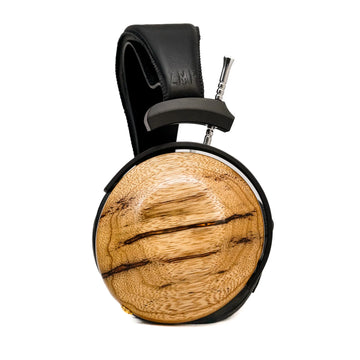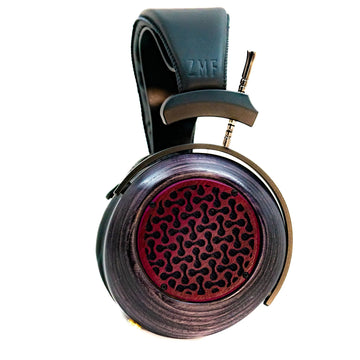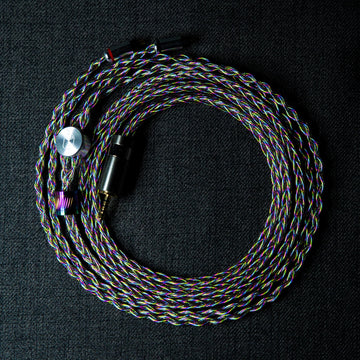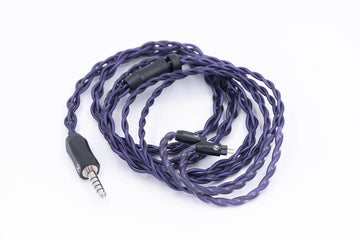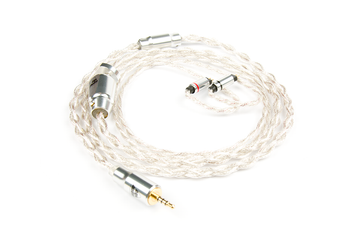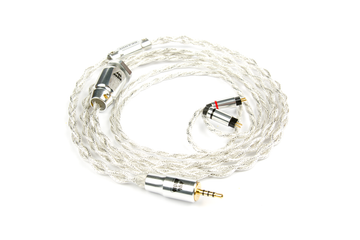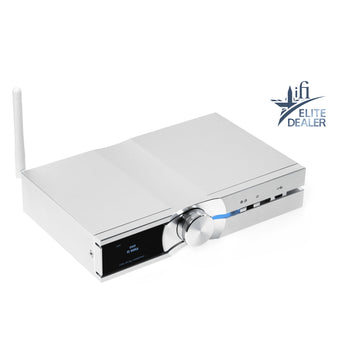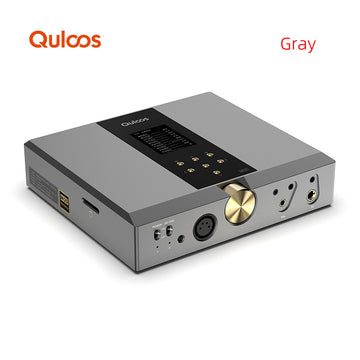Out of stock - Accepts Pre-Orders

Out of Stock - Allows Pre-Orders
Message us in discord or our website chat to find out pre-order time.
- Brise Audio Watatsumi
Brise Audio Watatsumi
Next-generation reference portable amplifier
- Pure analog balanced input/output portable amplifier
- Internal high quality sound processing optimized for pure silver wire
- Provides balanced output even for unbalanced input signals
- Equipped with the high quality sound processing electronic volume IC MUSES72320
- Drives headphones with a low-distortion current feedback amplifier
VAT Included for UK Customers.
For international customers, VAT is already removed from the displayed price. International Customers will incur local import taxes and duty charges.
VAT and Import Taxes FAQ
Brise Audio Watatsumi
Next-generation reference portable amplifier
Brise Audio developed the WATATSUMI as a next-generation reference portable amplifier to keep pace with the evolving demands of portable audio. It follows the TSURANAGI, their original reference amplifier designed for cable evaluation, which featured a 4.4mm balanced input/output to ensure uncompromised sound quality.
Since TSURANAGI’s release over four years ago, Brise Audio has expanded its cable offerings with advanced models like SHIROGANE and OROCHI. As the market shifted toward both low-impedance earphones that demand low noise and high-end headphones requiring high power, the need for a new amplifier platform became clear—leading to the creation of WATATSUMI.

DAP AND CABLE NOT INCLUDED*
WATATSUMI inherits the concept of the original TSURANAGI while aiming for improvements in every aspect
WATATSUMI carries forward TSURANAGI’s concept but introduces major enhancements. It features a newly designed low-noise BIS2.0 input stage from FUGAKU, a more powerful BOS1.5 output stage delivering 2000mW+2000mW at 16Ω, and an upgraded BPS1.5 power circuit for better voltage stability and low-frequency performance. The internal wiring now uses high-volume pure silver conductors, surpassing even SHIROGANE.
Launched in conjunction with Brise Audio’s 10th anniversary in 2025, WATATSUMI embodies the company's cumulative technical expertise and serves as a flagship model representing their dedication to high-end portable audio.

Attention to Chasis Design
To achieve a notable improvement in sound quality, the WATATSUMI amplifier incorporates a significantly increased number of components. Despite the added complexity, Brise Audio maintained a compact form factor by CNC-machining the chassis from a solid block of aluminum, enabling a denser and more adaptable internal design.
The battery has been upgraded with over 10% more capacity, and the battery decoupling capacitors have been increased to 4000μF—four times more than previous models. This enhancement supports cleaner power delivery and improved performance stability.
To accommodate the larger battery and optimize internal conditions, WATATSUMI uses a custom CNC-machined aluminum shielding case. This case not only improves noise resistance but also plays a key role in heat management. The power supply and amplifier circuits are thermally connected to the case, and heat is efficiently dissipated through side vents, continuing the design approach introduced with FUGAKU.
While the unit typically runs cool, the power amplifier can temporarily produce high heat when delivering large currents to demanding headphones or earphones. Since heat can affect amplifier performance, WATATSUMI’s thermal design helps minimize distortion and noise fluctuations by ensuring temperature stability, thereby maintaining consistent sound quality under varying loads.

WATATSUMI: Precision, Power, and Elegance
WATATSUMI introduces several user-focused design upgrades to enhance functionality, durability, and aesthetic appeal. One major change is the removal of the manual input selection toggle switch, replaced by an automatic system that detects plug insertion or removal. To eliminate noise during this process, the amplifier monitors the 4.4mm output jack and disengages the output relay when no earphones or headphones are connected.
To safeguard the volume knob from accidental movement or damage, a protective guard has been integrated directly into the CNC-machined aluminum chassis. The volume knob itself has been upgraded from brass to a titanium alloy and further protected with a PVD coating for increased durability. Complementing this change, the chassis screws are now made from pure titanium for improved strength and consistency.
Additional refinements include an enhanced battery indicator, which now displays four levels instead of three, providing more accurate charge monitoring. To protect surfaces and reduce wear, a layer of Ultrasuede has been applied to the bottom of the unit. The top is finished with a forged carbon plate, echoing the design of the FUGAKU model, and contributing to a lighter, more sophisticated build.

Power Section: BPS1.5
WATATSUMI’s power supply system builds on the architecture of previous models, featuring six independent rails—three for each audio channel—to ensure precise and isolated power delivery. The latest iteration introduces key enhancements, notably an increased number of decoupling capacitors and a completely redesigned PCB layout for improved performance.
Each power rail and its corresponding amplifier circuit are arranged as isolated “islands,” connected by wide copper traces that ensure low-impedance paths and minimal signal degradation. This thoughtful layout minimizes crosstalk and preserves the purity of the audio signal.
The power conversion circuit, which generates dual supplies from the battery, uses a switching method that demands strict control over high-frequency behavior to prevent noise and electromagnetic interference. Thanks to careful PCB design and component placement, WATATSUMI maintains the same low-noise characteristics as its predecessors while improving stability and efficiency.

Amplifier Section: BIS2.0, BOS1.5
One of the most significant advancements in WATATSUMI compared to the original TSURANAGI lies in its reconfigured input amplifier and optimized output amplifier layout. With the rise of low-impedance earphones that are particularly sensitive to residual noise, Brise Audio prioritized further noise reduction in this model.
Building on innovations from the FUGAKU project, the WATATSUMI incorporates the BIS2.0 input amplifier, a circuit that preserves excellent common-mode rejection (CMRR), high input impedance, and low distortion—all while significantly lowering residual noise. Thanks to this design, noise levels have been reduced to about one-fourth of the original TSURANAGI and half that of the TSURANAGI-V2. Additionally, the amplifier’s gain has been increased from 4.5dB to 6dB for enhanced headroom and performance.
Noise reduction is handled through the BIS2.0 input stage, while distortion is addressed via a newly refined layout and reduced output impedance in the output stage. The BOS1.5 output amplifier retains a fully differential OPAMP architecture with a current feedback amplifier, but introduces a redesigned capacitive load compensation circuit with lower impedance. This change reduces distortion under high current loads and enhances the immediacy and clarity of the sound.
To complete the design, the DC servo circuit from FUGAKU has also been implemented, helping reduce power consumption and improve offset cancellation, all while maintaining the low-noise, low-distortion standards Brise Audio is known for.

Evolving Audio Performance
In WATATSUMI, the PCB remains a 6-layer board as in previous models, but the copper foil thickness has been doubled. This enhancement significantly reduces wiring resistance, contributing to a richer low-frequency response and improved tonal texture.
A key departure from the TSURANAGI series is the shift in circuit layout philosophy. While TSURANAGI employed a mirrored layout between left and right channels, WATATSUMI adopts a fundamentally symmetrical design with strategic mirroring in some sections. Core components such as the input amplifier, electronic volume, and voltage amplifier are centrally located, while the output amplifiers are placed symmetrically on the left and right sides. The single-point ground is positioned at the top center of the PCB, carefully aligned to be equidistant from both channels and close to the output stages, ensuring clean signal referencing.
These layout changes, combined with reduced wiring impedance and careful component selection, result in lower total harmonic distortion plus noise (THD+N), especially under high current output. This translates to better source fidelity and a smooth, stable listening experience, even at higher volume levels.

The Evolution of Portable Amplifiers
Brise Audio’s guiding principle in developing WATATSUMI is that lower noise enhances the perception of subtle sounds, while lower distortion enables faithful reproduction of the source’s tonal character. Although other factors also influence sound quality, the focus here is on minimizing noise and distortion to achieve a cleaner, more accurate output.
To illustrate performance, a graph showing THD+N (Total Harmonic Distortion plus Noise) versus input level is referenced. As output increases, THD+N typically drops—until distortion rises again near the amplifier’s output limit due to clipping. The most important region for evaluation is just before clipping, where linearity and minimal distortion indicate superior design. On the low-output end, where noise dominates, the performance of the input amplifier becomes crucial. WATATSUMI demonstrates a reduction in residual noise by half with each generation, thanks largely to the BIS2.0 input stage.
Compared to the original TSURANAGI, which delivered 700mW+700mW at 16Ω with THD+N under 0.01%, WATATSUMI maintains an even lower THD+N—under 0.002%—at a much higher 2000mW output. Brise Audio also challenges the industry norm of defining rated power at 0.1% THD, which they consider too lenient. Instead, they adopt a stricter standard of 0.01% THD to better reflect true sound quality.
Ultimately, WATATSUMI achieves substantial improvements in both low-level detail and high-output fidelity, making it a clear evolution in portable amplifier performance.








